Top 8 Most Beautiful Historical Sites in Albania
Albania has several historic places that are worth seeing. This territory was once inhabited by ancient Illyrians and Greeks, it afterward became a Roman ... read more...colony. Various locations in Albania still have traces of this medieval past. Here is our list of the most beautiful historical sites in Albania. These can be visited by a history buff while touring the nation.
-
The emblem of Apollonia is the Roman monument of Agonothetes, which was built in the second century and serves as its bouleuterion.
The City Council meeting place in ancient Greece was known as the "Bouleuterion." In Apollonia, this is near the Agora in the city center (the central meeting and marketplace of a city). It was constructed during the Roman period in the final part of the second century BC.
The monument of Agonothetes was shaped like a semicircle and used as a meeting place for the city council - the Bule. The front of the structure was uniquely ornamented, with six pillars capped with Corinthian capitals. According to an inscription from the middle of the second century AD, the edifice was built by high-ranking officers of the city as a memorial to honor the loss of their soldier brother.
Location: Fier County, Albania
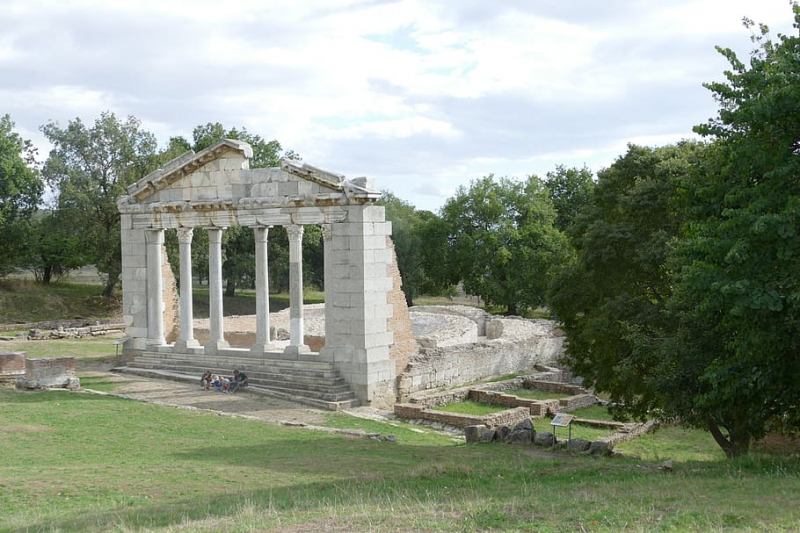
Photo: Wallpaper flare 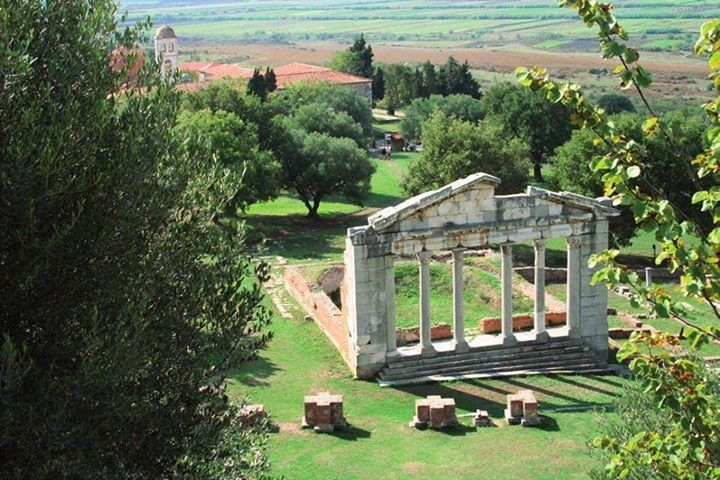
Photo: Pinterest -
The Kruje Castle is a castle in the Albanian city of Kruje that served as the focal point of Skanderbeg's resistance against the Ottoman Empire. The Teqe of Dollme of the Bektashi (an Islamic Sufi sect), the National Skanderbeg Museum, the remnants of the Fatih Sultan Mehmed mosque and its minaret, an ethnographic museum, and a Turkish spa are all housed within the castle.
The history of Kruje Castle is associated with the Albanian people. This castle is one of the most popular tourist destinations in Albania. One of the greatest attractions is the National Museum "George Castroti Skanderbeg," which is housed within the fortification (Muzeu Kombetar "Gjergj Kastrioti Skenderbeu" in Albanian). Architects Pranvera Masha and Pirro Vaso designed this museum in the early 1980s. Inside the museum, there is a large collection of original books, documents, artefacts, and authentic replicas that depict the history of the Albanian people in the fifteenth century. This museum has become a metropolitan skyline landmark.
Andrea Thopia unsuccessfully besieged the city during the Albanian Revolt of 1432-1436, and Ottoman authority was restored. Following Skanderbeg's insurrection in 1443, the fortress withstood three enormous Turkish sieges in 1450, 1466, and 1467, with garrisons often no bigger than 2,000-3,000 men under Skanderbeg's leadership. Mehmed II "The Conqueror" could not breach the castle's meager fortifications until 1478, ten years after Skanderbeg's death. Today, it is a tourism hub in Albania and a source of inspiration for locals. Kruje Castle is located at a height of 557 meters (1,827 ft)
Location: Kruje, Albanie
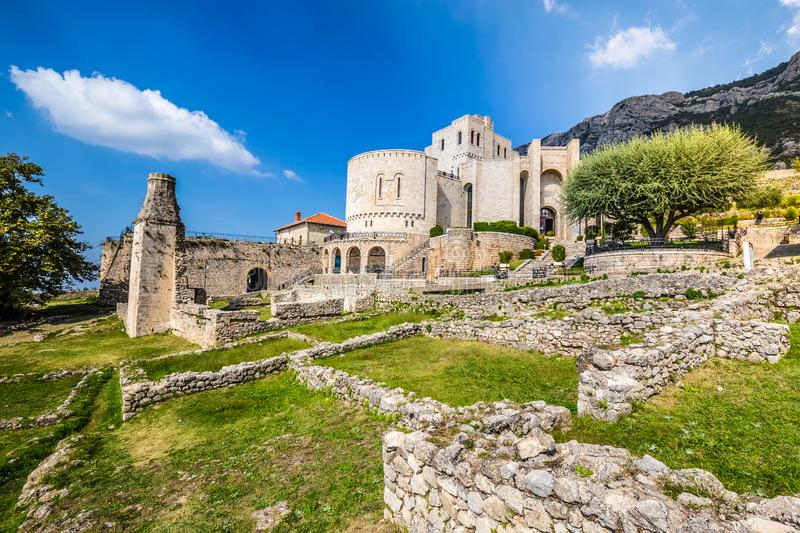
Photo: Dreamstime Video: Albania by drone 4K -
Berat Castle, also known as the Citadel of Berat and the Castle Quarter, is a stronghold that overlooks the town of Berat in Albania. It was built mostly in the 13th century and has several Byzantine churches as well as Ottoman mosques. It is located on a rocky hill on the left side of the Osum River and is only accessible from the south. It is located at a height of 214 meters (702 ft).
After being burned down by the Romans in 200 B.C., the fortifications were reinforced in the 5th century by Roman Emperor Theodosius II to safeguard the Balkans from Barbarian assaults. They were later renovated in the sixth century by Emperor Justinian I and again in the thirteenth century by the Despot of Epirus, Michael I Komnenos Doukas, a cousin of the Byzantine Emperor. This last phase is represented by a Monogram created of red bricks put in a castle wall. In the mid-14th century, the fortress was ruled by John Komnenos Asen. A walled courtyard protects the main entrance on the north side, and there are three lesser entrances.
The stronghold of Berat in its current form, while being severely destroyed, is a wonderful sight. Its large surface area allowed it to house a sizable amount of the city's population. The structures within the stronghold were constructed in the 13th century and have been conserved as cultural monuments due to their distinctive architecture. The fortress's population was Christian, and it possessed around 20 churches (most of which were erected in the 13th century) and just one mosque, which was used by the Turkish garrison (of which there survives only a few ruins and the base of the minaret). The fortress's churches were destroyed throughout time, and just a few survive.
Location: Berat, Albania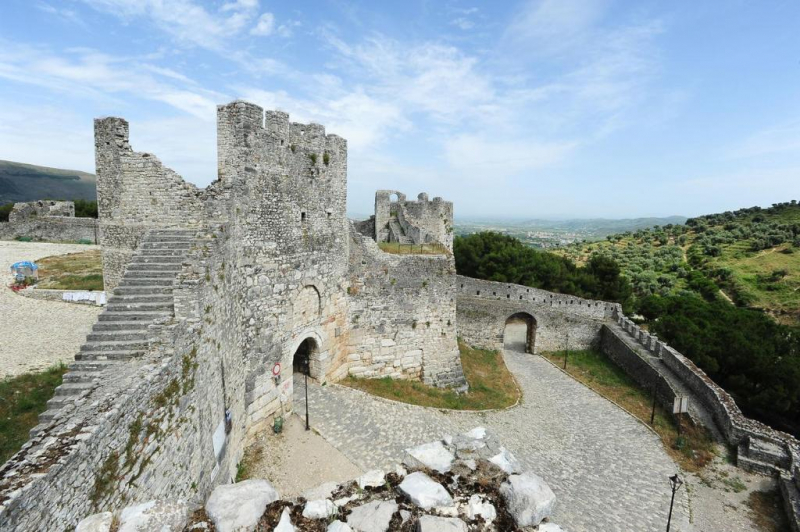
Photo: Booking.com 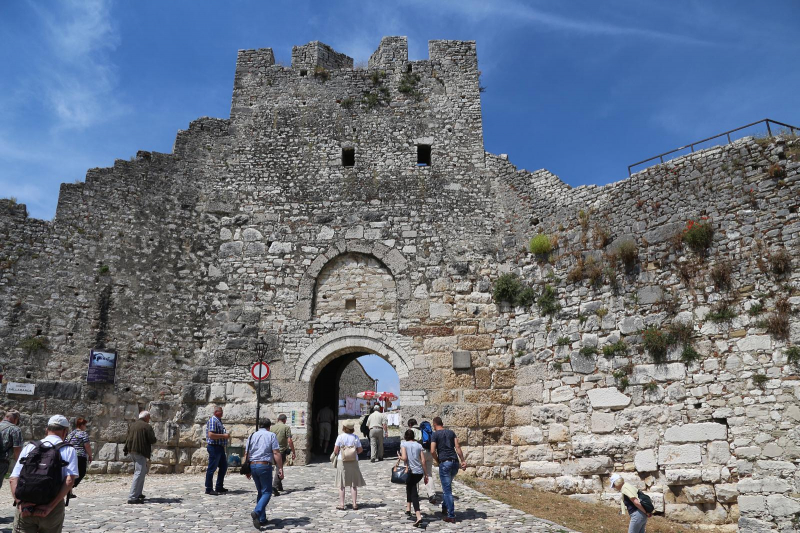
Photo: Thousand Wonders -
The Amphitheatre of Durrës is a Roman amphitheatre erected by Emperor Trajan in the second century AD, and it is one of the most beautiful historical sites in Albania. Earthquakes in the sixth and tenth century destroyed it.
Durrës' Amphitheatre was established in the early second century AD in the city of Durrës. It was almost certainly utilized for performances throughout the following two centuries. Durrës was created in 627 BC and is now Albania's main port. The Roman amphitheatre is constructed into the slope of a hill, with staircases and galleries at various levels inside. Its primary purpose was to hold gladiator fight, and it could have held between 10,000 and 20,000 people.
The earthquake of 345/346 AD most likely damaged the amphitheatre, and an early Christian chapel was erected on its location in the second half of the fourth century. In the sixth century, frescoes and mosaics were added to the chapel.Durrës Amphitheatre is a one-of-a-kind structure in Albania. It is centrally positioned in Durrës and adjacent to other archaeological sites. It is also close to the Archaeological Museum. The amphitheatre is surrounded by contemporary city, and modern housing has been erected on top of a portion of the arena.
Location: Durrës, Albania
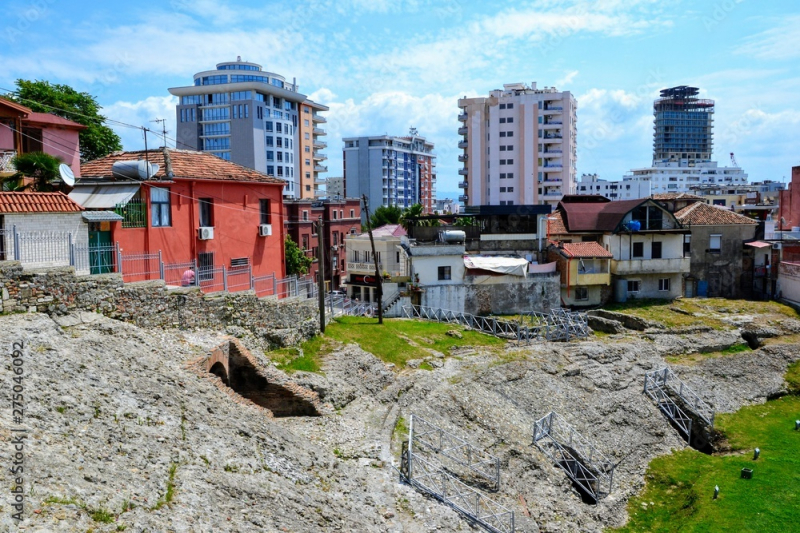
Photo: Adobe Stock 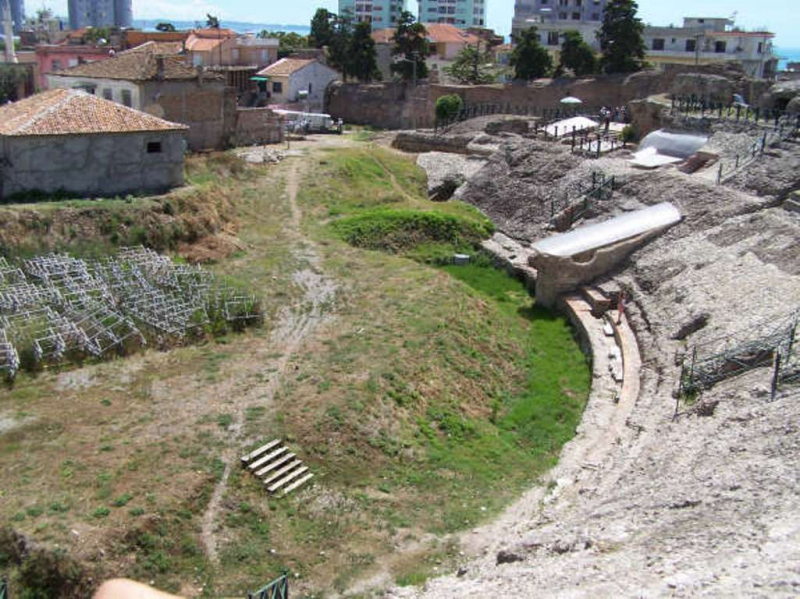
Photo: Europa Nostra -
The Monastery of 40 Saint is a damaged Eastern Orthodox monastery in southern Albania overlooking the seaside city of Sarand. The monastery was built in the sixth century AD and may have been the most prominent pilgrimage place in the Ionian Sea region for at least a millennium. The monastery's name, Agioi Saranta (meaning Forty Saints in Greek), was moved to the nearby city of Onchesmos. The land was turned into a military base under the People's Republic of Albania (1944-1991). Only a portion of the basilica-style church's side walls remain today.
The monastery was most likely constructed during the time of Byzantine Emperor Justinian (527–565 AD) and served as a shrine until Albania's communist era (1944-1991). The monastery complex includes a basilica church, hostels for pilgrims and other visitors, underground tunnels, holy water springs, and crypts. There were forty little chapels in the underground rooms, each dedicated to one of the Forty Martyrs of Sebaste who were martyred during the Early Christian period. During the High Middle Ages, the monastery's name was changed to Onchesmos, a neighboring seaside city. Sarandë, the contemporary settlement, grew out of this.
Location: Sarandë, Albania
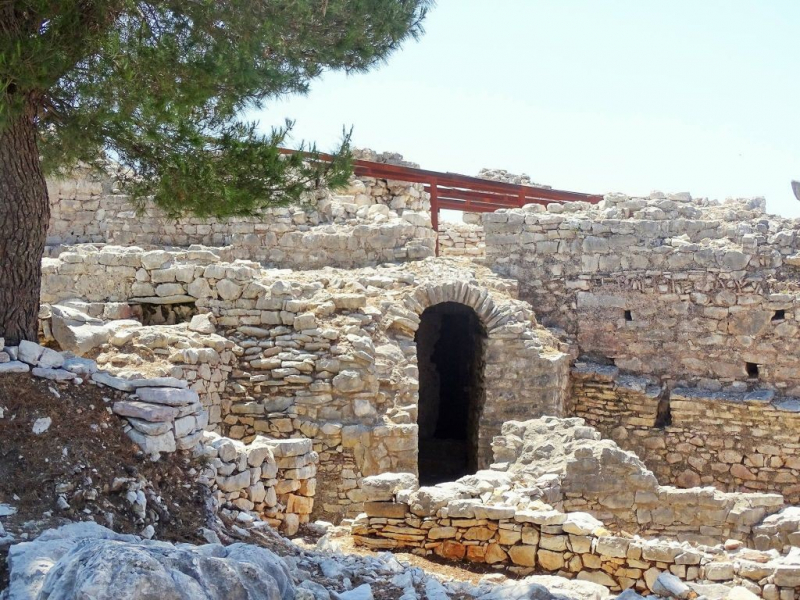
Photo: Invest-in-albania 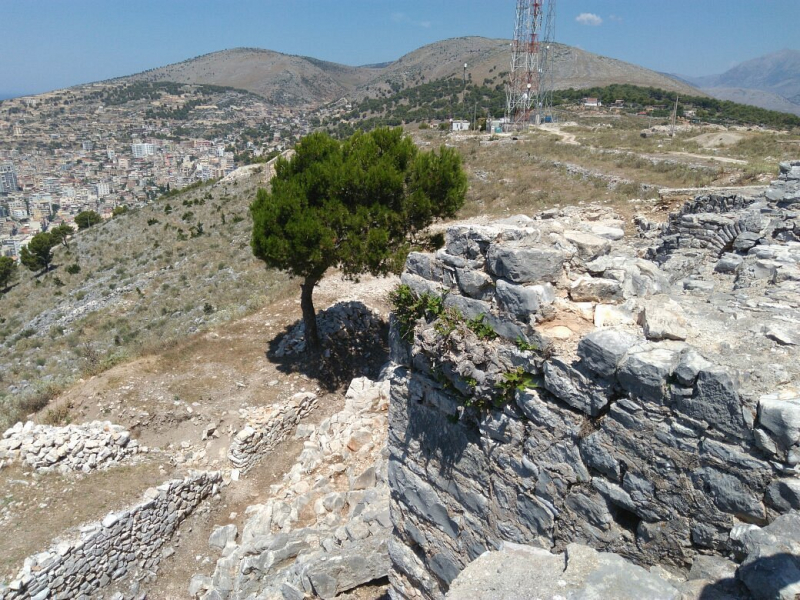
Photo: Tripadvisor -
Durrës Castle is a fortified ancient city in the Albanian town of Durrës. It is surrounded by city walls that were constructed in the late fifth century and were rebuilt and reinforced in the Middle Ages and early modern times.
Byzantine Emperor Anastasius I (r. 491–518), who was born in Durrës, erected the fortress (ancient Dyrrhachium). Anastasius made the city one of the strongest fortified on the Adriatic at the time. An earthquake in 1273 destroyed the old walls, which had to be severely restored.
The medieval walls are now approximately 15 feet (4.6 meters) tall, with three entrances to some of the defense towers remaining along nearly one-third of the original length of the city walls. The Republic of Venice strengthened the castle with additional guard towers, and the wall was fortified during the Ottoman Empire's control in Albania.
Location: Durrës, Albania
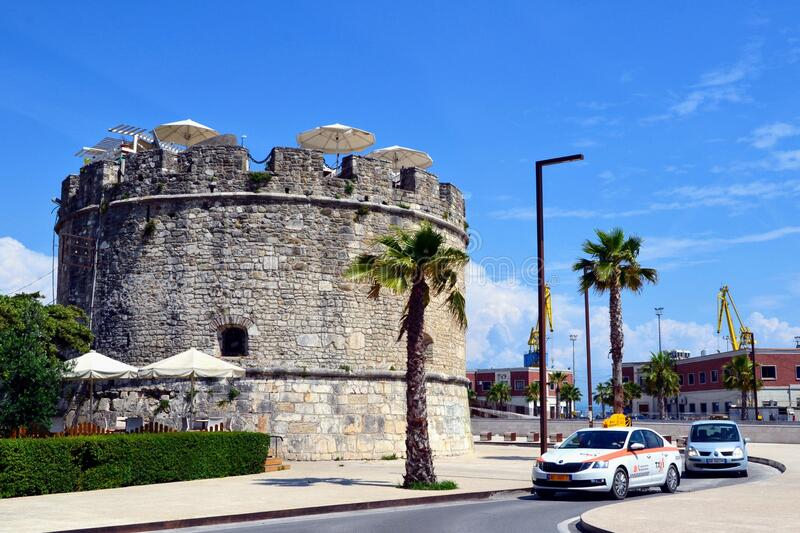
Photo: Dreamstime 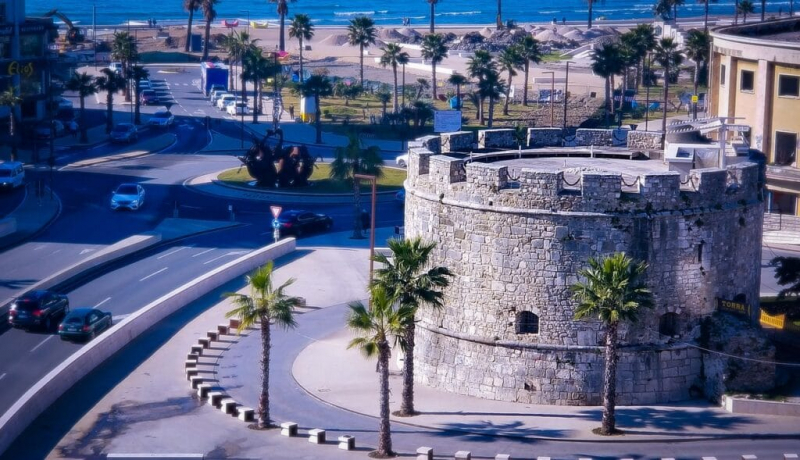
Photo: TopFlightNow -
Butrint National Park is located in southern Albania, and is also one of the most beautiful historical sites in Albania. It lies 18 kilometers (11 miles) south of Sarandë. The park is 9,424 hectares (94.24 km2) in size, featuring freshwater lakes, wetlands, salt marshes, open grasslands, reed beds, and islands. The importance of the park for conservation is evident in the high number of species, which includes over 1,200 distinct animals and plants. Its duty includes the conservation of Butrint's lake and lagoon, Vivari's natural waterway, Ksamil's islands, and the archaeological site, which contains rich relics of ancient civilizations.
Butrint is strategically placed in the extreme south of the nation, near the eastern section of the Corfu Strait. It stretches across a peninsula bounded by Lake Butrint and the Vivari Channel. A thin sandy bar connects the lake to the Ionian Sea via the canal. The park has a warm Mediterranean environment due to its closeness to the sea. This implies that winters are pleasant, but summers are scorching and dry.
Butrint's archaeological legacy is one of the most important in the country, featuring many artifacts and constructions spanning from the Iron Age to the Middle Ages. The city walls, a late-antique baptistery, a large basilica, a Roman theatre, and two castles are all still standing. The old city is set in natural woods with a diverse environment that is influenced by the neighboring lake and canal. Nonetheless, it is the mix of cultural artifacts and natural environment that distinguishes Butrint National Park.
Location: Location: Butrint, Albania
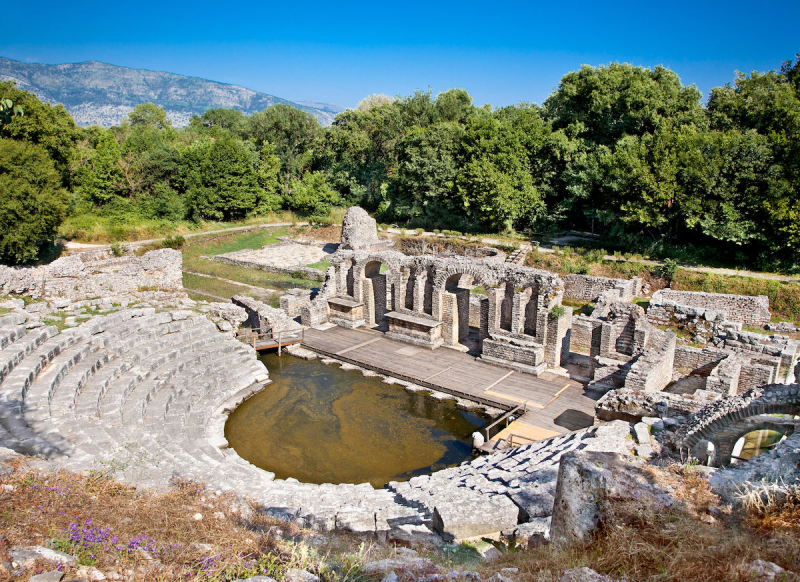
Photo: Matador Netwwork 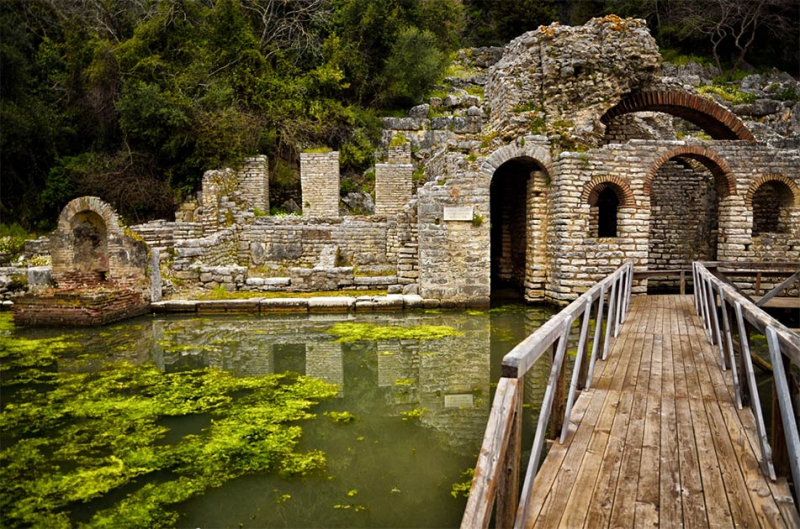
Photo: Acient Orgins -
A visit to Skenduli House is a must if you wish to learn about the greatest model of local architecture from the nineteenth century. Everything is completely unique, making this the most genuine building in Gjirokastër. This is the best preserved home in Gjirokastër's ancient city, dating back more than 300 years (built in 1823).
Nasip Skenduli, the house's owner and a descendent of the family that built it, is a fantastic storyteller. He will spend years explaining everything about the house and the preservation procedure. During the Soviet era, it was the original Ethnographic Museum. However, now that the mansion has been returned to its original owner, it is available to the public.
What makes Skenduli House so unique? Its structure indicates that this was one of the wealthiest residences in Gjirokastër, since it contained 9 fireplaces (the more fireplaces, the wealthier the family); 6 baths, 12 rooms, 44 doors, 64 windows, and 4 hammams (Turkish bath). The authorities have not yet repaired this house, according to the owner. Because many of the artifacts are genuine, this home is the most authentic and unique in Gjirokastra. It is near to the Ethnographic Museum and the old residence of Albanian dictator Enver Hoxha.Location: Gjirokastër, Albania
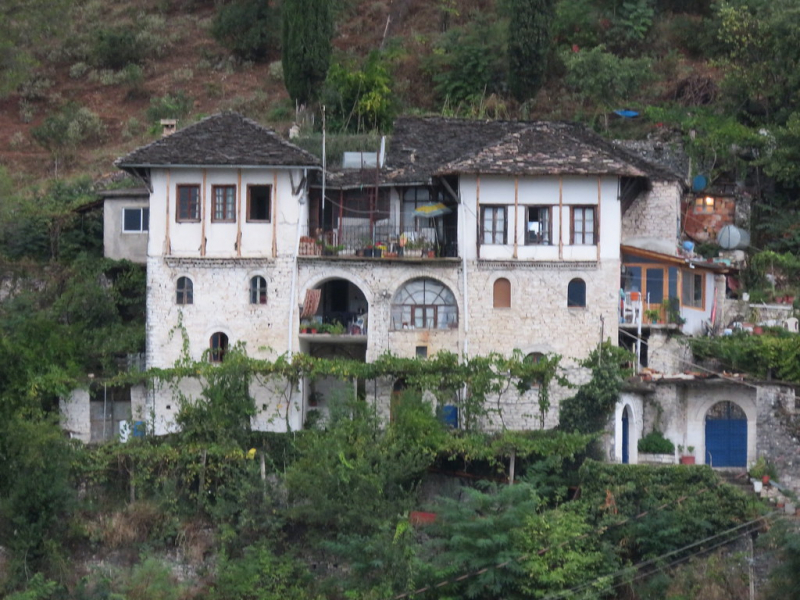
Photo: Flickr 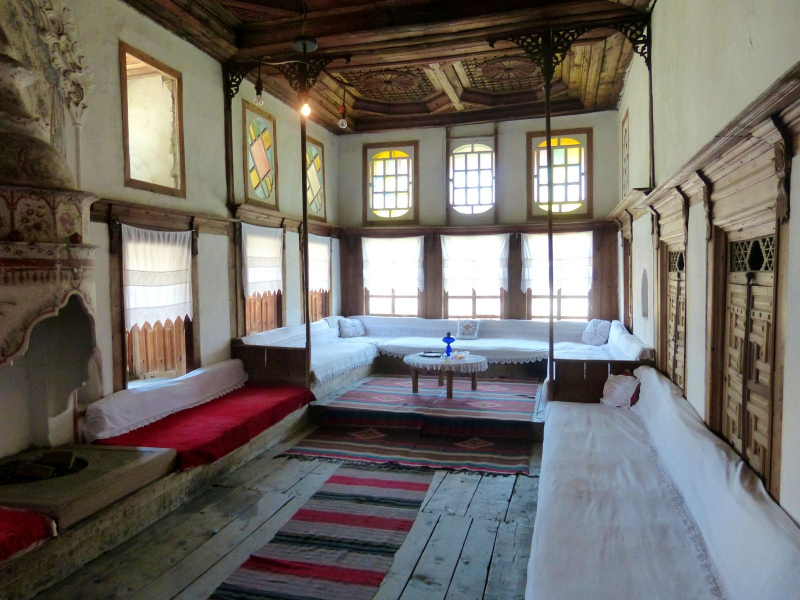
Photo: Pinterest





























